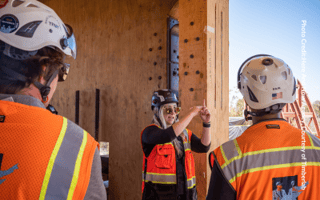Learn about the beneficial relationship between wood building products and sustainably managed...
How Sustainable Forest Practices Affect Green Building
See why designers can help spur healthy, resilient forests by specifying renewable wood products.
When it comes to environmental benefits, not all forestland is equal. Left to the wilderness, forests can emit carbon as trees die from insects, disease, or wildfires. That’s why specifying wood products from sustainably harvested forests can be an important green building tool—not just to improve the stored carbon performance of our buildings, but also to encourage healthier forests.
“Climate change requires actively managing our forests for mitigation and adaptation, as well as to maintain healthy, growing trees needed to remove carbon dioxide from the atmosphere,” writes Nick Smith, executive director of Healthy Forests, Healthy Communities. “When timber is sustainably harvested, much of that carbon stays in the wood, lumber, and other timber products indefinitely. Removing dead and dying trees after a wildfire, and processing them into durable wood products, can help reduce the post-fire emissions that are contributing to climate change.”
Architects can enhance their authority as sustainable design professionals by becoming educated on the true environmental impact of their product specifications.
Forestry expert and executive director of Dovetail Partners, Katie Fernholz, notes as an important element of context that 90% of U.S. timber harvests comes from private forests, the majority of which are held by family landowners.
Understanding what motivates those families to keep growing their forests is key to improving their sustainability. “When we buy the things that forests give us, it sends a market signal to those private landowners to keep growing trees and to have more forests in this country,” Fernholz says.
While making forests healthier is a positive outcome on its own, it’s also part of a cycle that leads to reduced carbon emissions and climate benefits. Using forest products in buildings allows designers to avoid emissions from materials that have a larger carbon footprint.



Add A Comment